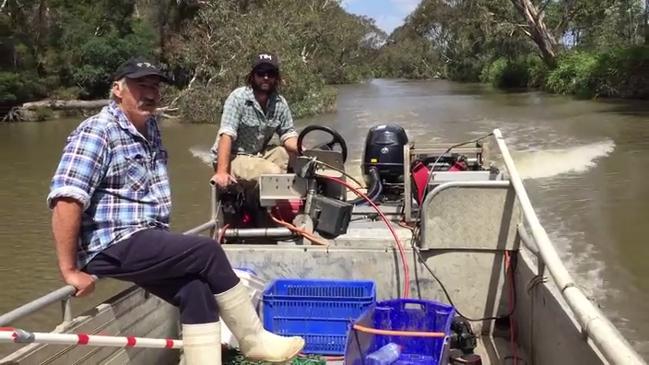Dead carp from the Murray River could become organic fertiliser, following Port Lincoln trial
A PORT Lincoln business may hold an answer of what to do with tonnes of dead and putrid carp that could result from the release of the herpes virus in the Murray River.

SA Business
Don't miss out on the headlines from SA Business. Followed categories will be added to My News.
A PORT Lincoln business may hold an answer of what to do with tonnes of dead and putrid carp that could result from the release of the herpes virus in the Murray River.
SAMPI, which develops products from the waste material of the Bluefin tuna and Kingfish farms, has trialled making organic fertiliser from 10 tonnes of carp biomass.
The project was in conjunction with Curtin University researchers, who are investigating options for the sustainable use of carp as part of the $15 million National Carp Control Plan.
SAMPI used enzyme hydrolysis to break down carp into smaller peptides and amino acids, which can be used for fertiliser or as an aquaculture or animal feed ingredient.
The university’s lead researcher, Dr Janet Howieson, said the carp were first minced then put through a fermentation process to create the fertiliser.
“This was process was definitely a success and we’re currently getting the product analysed to look for nutritional properties, like protein,” Dr Howieson, from the School of Molecular and Life Sciences, said.
“With the remaining bones and scales ideally I’d like to do collagen extraction, but we haven’t started that yet as it would be a long-term laboratory project.”
The university’s research project, Assessment of options for utilisation of virus-infected carp, is to identify local solutions that could be used for carp biomass.
NCCP National Coordinator Matt Barwick said identifying economically viable and productive uses for carp was an essential part of the NCCP’s clean-up strategy.
“One of the most frequent comments received at our community consultation sessions relate to how we can best use potential carp biomass,” Mr Barwick said.
“We are encouraging the public to engage with the NCCP to share their thoughts and opinions in relation to the impact of carp, the proposed methods for reducing carp numbers and possible options for carp biomass use.”
The Fisheries Research and Development Corporation is helping lead the NCCP planning process and will provide recommendations to the Federal Government, which at the end of the year will decide whether to release the virus.
If approved, the virus could kill thousands of carp within the first 24 hours of release and the clean-up will involve an area of more than one million square kilometres.


